As an Amazon Associate I earn from qualifying purchases.
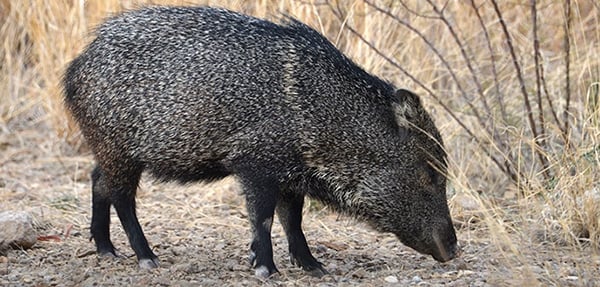
I had the opportunity to hunt whitetail deer in south Texas recently, and while I did see some nifty bucks, I didn’t shoot one. I did, however, shoot a javelina, and to be honest, I was more excited about that than about any of the deer I saw. Not that I don’t love deer hunting, but I can hunt deer all over the continent. Javelina are special. In the United States, they only live in Texas, New Mexico and Arizona.
I know, I know. I can hear some of you groaning. Skunk pigs? Seriously? Seriously. Walk with me for a moment.
Part of my fascination is the animal itself, which is every bit as unique in North America as is the enigmatic pronghorn. But mostly I wanted to test the conventional “wisdom” that javelina are inedible. I felt in my bones that this was cowboy snootiness derived from the fact that the little piggies rub themselves all over with a scent gland on their backs to make sure everyone in the herd smells just right. And yeah, that scent is musky, in a men’s locker room kinda way.
But I’d seen my friend Andrew Zimmern eat them with no complaints, and many of my friends in New Mexico and Arizona tell me they love them. It was only in Texas where they held an unsavory reputation.
I am happy to report that the myth of the inedible javelina is indeed just that: a myth. The javie I shot in the rain that day tasted fantastic slow cooked as cochinita pibil, a Yucatecan dish with lots of achiote and citrus; recipe is in that hotlink.
What’s more, I grilled the backstraps and tenderloins over mesquite to a solid medium and they were epic. Epic, I tell you. As in, screw venison, I want this every day.
Let’s start with a bit more on the animal. A javelina is a New World pig, Tayassu tajacu in Latin. More specifically this is a collared peccary; there are two, maybe three other species of New World pig wandering around in Central and South America. A long time ago there was a common ancestor to the javelina and the pigs we all know and love as bacon, but they diverged about 40 million years ago by most reckonings.
To put that in perspective, higher primates like us were just getting started back then. So yeah, javies are related to pigs, but only in a galactic sense.
Javelina aren’t large. Eighty pounds is a monster, and mine was closer to 45 pounds. They can’t see worth a damn, having a hard time focusing past 100 yards. Their hearing is OK, but ours is better. Where they excel is their nose; javelina have an excellent sense of smell.
They like to wander around in family groups of between 10 and 50, and are more or less mellow unless provoked. If threatened, they will let you know why the Spanish named them for their javelin-like canine teeth, which are truly ferocious. The clack them together loudly.
Their diet gives us a clue about how they’d taste. Short version: Awesome, and here’s why — javelina are vegetarians by choice. Sure, they’ll eat dead birds and carrion and bugs, but several studies have shown that animal matter comprises just 1 percent of a peccary’s diet.
Humans in general prefer to eat herbivores first, omnivores — like true pigs — second, and carnivores, third. So this fact alone would suggest that a javelina will taste at least as good as pork, if not better.
What sort of plants does Gregory Peccary like? (If you get that reference, you win a prize) By all accounts, the thing they love best are prickly pear cacti. They also love to eat mesquite beans, as well as those of palo verde, lupines and ironwood. They like other cacti, too, and use those teeth to hammer underground tubers, rhizomes and bulbs. They’re big fans of acorns when they can find them.
Note that nothing in this list can possibly lend itself to a bad-tasting animal, especially considering that pretty much everything javelina eat humans do, too.
If you want to read more about javelinas from a biologist’s point of view, there’s a cool .pdf on them from the Texas Dept. of Wildlife, and another excellent webpage on them done by the National Park Service. And there’s a whole website devoted to hunting javelina called, as you might expect, javelinahunter.com.
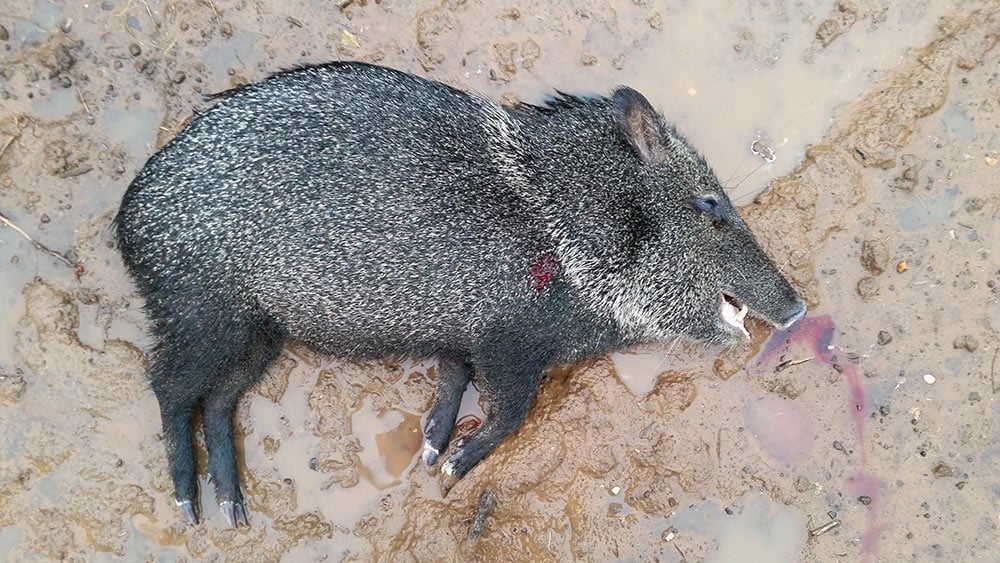
Now. About that smell.
The javie I shot had absolutely no odor. None. Yes, it was a sow, but still. The second javelina, shot by my host so I could bring one home to experiment with, also had no real odor other than your typical dead pig smell, which isn’t lovely, but nor is it so revolting I’d want to toss the thing. It was nothing like the boar taint you’ll smell on an old boar hog, that’s for sure.
Everyone told me to watch out for the scent gland on the small of the back. So I did. When I got around there with my skinning knife, I was very, very careful… for no reason. The scent gland is basically in the skin. Skinning the animal as you would any other was perfectly fine. Yes, I made sure I did not grab the area of the scent glad to pull the hide down, but nor was it tricky to get past it. In short, dealing with the scent gland was no biggie.
If you are extra worried about the odor on the hair getting on the meat, wear a pair of gloves while skinning, then toss those gloves when you gut and butcher — or wear a second pair.
A second pair of gloves may not be a bad idea, as javelina are known to carry salmonella. According to this study, javelina can also carry E. coli bacteria, although not the nasty E. coli 0157 that can really mess you up.
But fascinatingly, an extensive search of the scientific and health literature found no record of peccaries ever carrying the trichinae larvae that can cause trichinosis. (Here’s one study that tried to locate it, but came up with nothing.) No trich in javelina? Interesting. Only explanation I can think of is how small a percentage animal matter is in a javie’s diet. Vegetarians rarely carry the parasite — omnivores and carnivores do.
Bottom line: Eat your javelina. And cook it like domestic pork, to which it is related. And since there is no evidence of trichinae in javelina, that means you should be able to serve the meat at an interior temperature of 145°F, which is cooked, but with a lovely blush of pink.
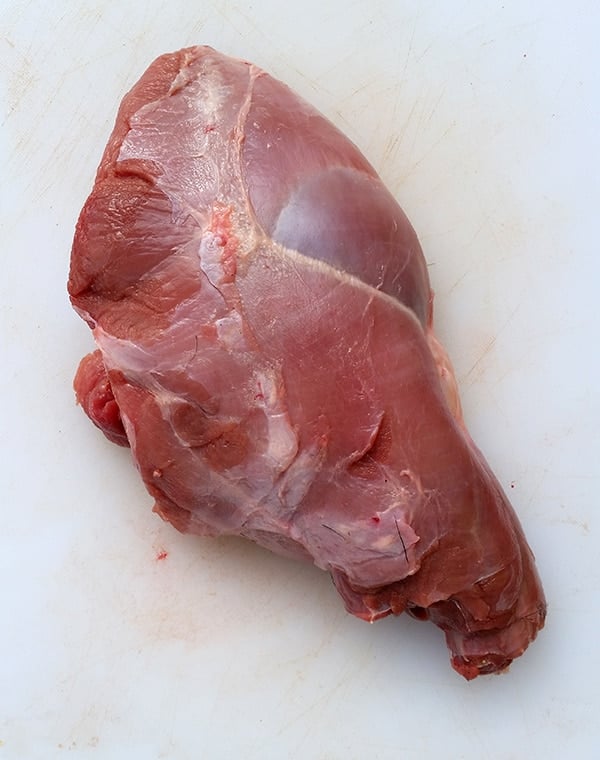
The meat is light colored, very lean and the shoulders and hams lend itself to slow-cooker or Dutch oven cookery. Think pulled pork and you’re on the right track. The backstraps are excellent grilled or seared to a solid medium.
Since it lives in Mexico, South America and our own Desert Southwest, it’s a natural to go there in terms of cuisine. Chile verde, mole, pit cooking, that sort of thing. No reason to stay there, though, as any sort of slow-cooked pork dish would work with a javelina. Southern pulled pork BBQ would be damn good. Maybe a Hawaiian luau?
My one piece of advice on cooking javelina that differs from pork is its need of fat: Javelina are super lean, so always add some fat when you pull the meat. I like pork lard or duck fat, but any sort of yummy fat, whipped or stirred into the pulled meat and sauce will do wonders.
And when you’re ready, make my all-time favorite javelina recipe, this javelina stew from the Yucatan in Mexico.

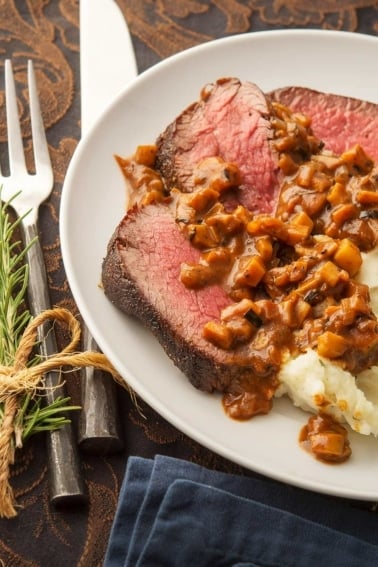

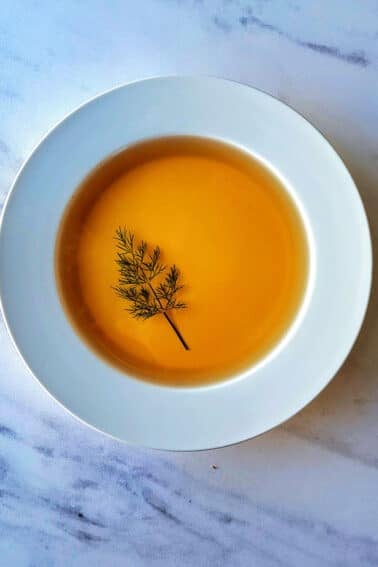
“a spray bottle of isopropyl alcohol” Great idea. Fleas can carry several diseases (those that infest rodents are known to carry Bubonic Plague for instance). Adding that to my hunting kit tomorrow.
I always take a spray bottle of isopropyl alcohol with me when hunting. This applies to deer, pigs , javelina- anything with fleas and ticks. Spray the animal all over after it’s down don’t forget any cracks and crevices. Wait for 15 minutes to handle it. This will eliminate almost all fleas and ticks and you won’t get them on you when you clean, or take the critters back to camp on your game.
I shot my first javi last night and can’t wait to get home to cook it! It was a small one, maybe 30lb, no stink at all either on mine.
Worst part was the fleas…and when those fleas got all over me and started biting. I had to do a quick Google to make sure javi fleas can’t infest humans!
Frank Zappa would approve.
Tidy little beasts Hank, what cal. did you shoot them with? and while I’m asking are you using lead-free bullets, and if so which?
SBW
Hey Sten. I did not shoot this one with copper bullets, as I was borrowing my host’s 30-06. I normally shoot with a .270 with copper Nosler Trophy Grade bullets.
Gotta love the nocturnal gregarious wild swine…
There’s more than a few here in AZ who also turn up their nose, and will only consume when made into chorizo massively adulterated with domestic swine and strong spices. Don’t know what they’re missing. We dry rub and grill loins/tenderloins, do the other parts pit roasted for carnitas, or summer sausage that’s 80:20 javelina:domestic snooter loin.
My wife and I have muzzleloader tags, heading out soon for our favorite early Spring ritual…
Hank – eagerly awaiting a recipe for Mudshark…
Warren – waste of game is unethical, if not illegal in most places. Not a helpful thing to post…
Dang it Hank! I’ve passed so many of these by. I don’t shoot them because really they aren’t much sport and I never intended to eat them. I’ve had family that have shot them and left them where they were. I guess the next one will be the first I try for dinner. Looking for the recipe when it comes out.
I have shot three (one boar and two sows) and LOVE their meat! Pit cooked, summer sausage, bratts… yum! I have never experienced the foul smell as, dead is dead, and it all smells the same to me. Thanks for shedding some positive light on these lazy but fascinating little critters! My February hunt can’t come soon enough:)
Perfect timing! We’re waiting for the meat from the javelina my husband bagged on a hunting trip just south of San Antonio. I knew they were edible!! We grew up in South Texas and the javelina is the mascot for my alma mater (a&m Kingsville). Anyway, all I ever heard was about the stink. I’m so glad my husband is willing to contribute to my culinary experimentation! Thanks for sharing your experience.
Have always wanted to hunt them, although they don’t live where I do. But I have a buddy in AZ. May have to work that out.
Great article, as always! I suppose we’ll soon be seeing recipes for Yellow Shark and Thing-Fish?
Ian: Indeed. Thing-Fish is one of my favorites… 😎
I made the teriyaki meatballs from the one I shot last year, and it was fantastic. Mine was musky; not overwhelming, not entirely bad bad-smelling, but not exactly good either. I sniffed on purpose and then was convinced the meat smelled bad, but “outside noses” couldn’t smell it later. The only trouble I had with skinning and gutting was because I am pretty much a novice big game hunter. I’m very excited to get another one this year and try the cochinita pibil.
In New Mexico, I’ve seen/harvested at about 6500′ in the mountains, definitely elk-ey looking areas. (As in, the entire cow herd was around somewhere). I think the success rates are so low here because people don’t realize all the habitats they can thrive in.
“The Adventures of G.P”
Mike: DING! DING! DING! Winnah! Father Frank provides…. 😎
BTW: good shot on that. I’m sure it dropped quick. I’d be totally excited too about scoring a javelina.
Tim: Yep. Fell and never moved again.
If anything qualifies as a miniature pig, javelinas do. I didn’t know they are somewhat cold hardy. A friend of mine has a pet potbelly pig and it is not miniature nor is it cold hardy. Its a house pig…. I rarely go visit him. I know first hand what its like to be attacked by a pig.
E. Nassar: Nope. Not Gregory Peck… 😉
Coming from south of the Nueces River in Texas, I am very familiar with the javelina. They are excellent eating. One of my favorites is pan seared backstrap with eggs, refried beans, flour tortillas, and homemade chile pequin salsa. Fooled many a “javelina hater” with that breakfast. I have been enjoying your blog for quite a while and enjoyed the podcast. Thanks.
Gregory Peck 😉
Fantastic article Hank. Also loved the first podcast episode. Keep them coming.
I can only think of a few animals that are truly “inedible” and I think that is just something in my head, and I am just not willing to go there (i.e. Coyotes, Starlings, Crows etc).
I try to kill an animal each fall and cook for my buddies on our “Boys Weekend” deer hunt. 2 years ago it was a big woodchuck that I made into a stew that I said was “beef” until it was all gone. Last fall it was a pair of Opossums, they knew from the get go of the meal something was up, but with the help of ice cold PBR’s and good BBQ sauce the pulled possum sliders weren’t terrible.
Great Article.
Very timely, Hank-I’ve got two in the freezer that need to get used up, and they are a little tricky to cook well( almost no fat at all).
They are expanding their range-herds have been seen as far north as the Grand Canyon, and where I hunt is at almost 9000 ft in northern AZ.
they don’t seem to have any problem with temps as low as 20 below 0 (for short times) Up here they seem to eat roots almost exclusively -and yup, they taste just fine. Try pressure-cooking the ribs, a light smoke, then grill-perfection. Posole is a great use, as well. Thanks for all the great ideas Hank- I hope you make it to Flagstaff one of these days.
I’ve read it’s illegal to kill them in Arizona.
Jan: That is incorrect. Javelina in Arizona are a game species, so you need a tag. It is illegal to just kill one indiscriminately, though.